Grow Lettuce at Home – imagine stepping outside your back door and harvesting crisp, fresh lettuce for tonight’s salad. No more trips to the grocery store for wilted greens! For centuries, cultivating your own food has been a cornerstone of self-sufficiency and a connection to nature. From ancient Roman kitchen gardens to the victory gardens of wartime, growing your own produce has always been a way to ensure fresh, healthy food is available.
But let’s be honest, not everyone has acres of land or the time for extensive gardening. That’s where these simple, yet effective, DIY tricks come in. I’m going to share some easy hacks that will allow you to grow lettuce at home, even if you only have a small balcony or a sunny windowsill. We’ll cover everything from choosing the right container to understanding the best soil and watering techniques.
Why do you need these DIY tricks? Because fresh, homegrown lettuce tastes infinitely better than store-bought, and you’ll know exactly what went into growing it – no pesticides or mystery ingredients! Plus, it’s incredibly rewarding to nurture a plant from seed to salad. So, get ready to ditch the grocery store lettuce and embrace the joy of growing your own! Let’s get started!
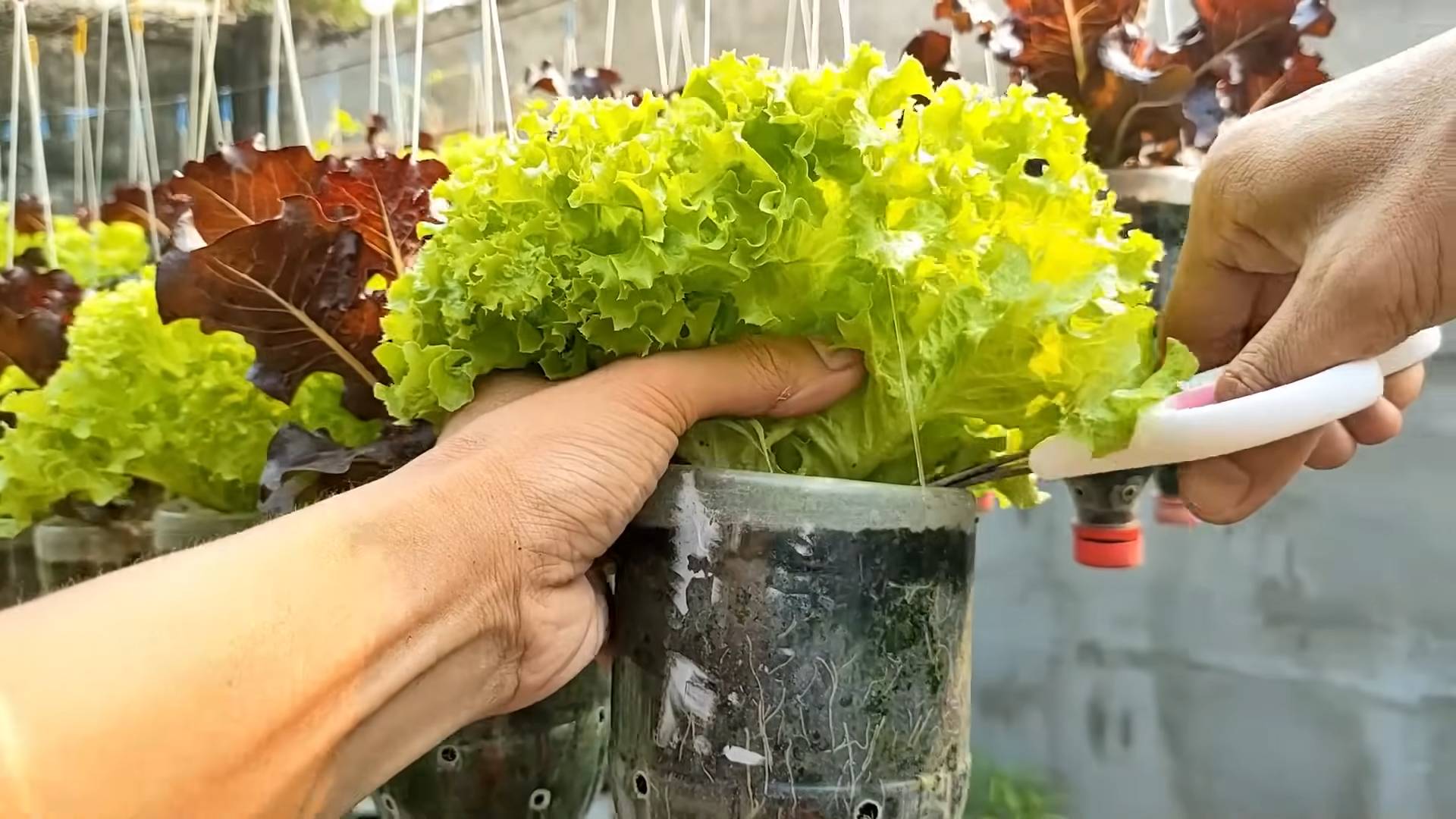
Grow Your Own Delicious Lettuce: A Beginner’s Guide
Hey there, fellow gardening enthusiasts! I’m so excited to share my secrets to growing crisp, vibrant lettuce right in your own home. Forget those sad, wilted heads at the grocery store – with a little know-how, you can enjoy fresh, organic lettuce whenever you want. This guide is perfect for beginners, so don’t worry if you’ve never planted a seed before. Let’s get started!
Choosing Your Lettuce Varieties
First things first, let’s talk lettuce types. There’s a whole world beyond iceberg out there! Different varieties offer different flavors, textures, and growing characteristics. Here are a few of my favorites:
* **Loose-leaf Lettuce:** These are the easiest to grow and harvest. You can pick individual leaves as needed, and the plant will keep producing. Think varieties like ‘Black Seeded Simpson’, ‘Red Sails’, and ‘Oak Leaf’.
* **Butterhead Lettuce:** These form loose heads with soft, buttery leaves. ‘Buttercrunch’ and ‘Bibb’ are popular choices.
* **Romaine Lettuce:** Known for its crisp texture and upright growth, romaine is a staple for salads. ‘Paris Island Cos’ and ‘Little Gem’ are great options.
* **Crisphead Lettuce:** This is your classic iceberg lettuce. It’s a bit more challenging to grow than other types, but definitely rewarding.
I recommend starting with loose-leaf varieties – they’re the most forgiving!
Gathering Your Supplies
Okay, now that we’ve picked our lettuce, let’s gather our supplies. You’ll need:
* **Lettuce Seeds:** Choose your favorite varieties!
* **Seed Starting Trays or Small Pots:** These will be used to start your seeds indoors.
* **Seed Starting Mix:** This is a light, sterile soil mix specifically designed for seedlings.
* **Potting Soil:** This will be used when you transplant your seedlings into larger containers or your garden.
* **Containers (Optional):** If you’re growing lettuce in containers, you’ll need pots that are at least 6 inches deep.
* **Watering Can or Spray Bottle:** For gentle watering.
* **Grow Lights (Optional):** If you don’t have a sunny windowsill, grow lights will help your seedlings thrive.
* **Fertilizer (Optional):** A balanced liquid fertilizer can help boost growth.
Starting Your Seeds Indoors (Recommended)
Starting your seeds indoors gives them a head start and protects them from harsh weather. Here’s how I do it:
1. **Prepare Your Seed Starting Trays:** Fill your seed starting trays or small pots with seed starting mix. Gently pat it down.
2. **Sow the Seeds:** Sprinkle a few lettuce seeds on top of the soil in each cell or pot. Lettuce seeds are tiny, so don’t bury them too deep. A light dusting of soil is all they need.
3. **Water Gently:** Use a spray bottle to mist the soil. You want to keep it moist but not soggy.
4. **Provide Light:** Place your seed starting trays under grow lights or on a sunny windowsill. Lettuce needs at least 6 hours of light per day.
5. **Keep the Soil Moist:** Check the soil daily and mist it with water as needed.
6. **Thin the Seedlings:** Once your seedlings have their first true leaves (the second set of leaves), thin them out so that only one strong seedling remains in each cell or pot. I know it’s hard to do, but it’s necessary for healthy growth!
Transplanting Your Seedlings
Once your seedlings are a few inches tall and have a few sets of true leaves, they’re ready to be transplanted.
1. **Harden Off Your Seedlings:** Before transplanting, you need to “harden off” your seedlings. This means gradually exposing them to outdoor conditions. Start by placing them outside for an hour or two each day, gradually increasing the amount of time they spend outdoors over the course of a week.
2. **Prepare Your Planting Area:** If you’re planting in containers, fill them with potting soil. If you’re planting in the garden, choose a spot that gets at least 6 hours of sunlight per day and has well-drained soil. Amend the soil with compost or other organic matter to improve its fertility.
3. **Transplant the Seedlings:** Gently remove the seedlings from their trays or pots. Dig a small hole in the soil and place the seedling in the hole. Backfill with soil and gently pat it down. Space the seedlings about 6-8 inches apart.
4. **Water Thoroughly:** Water the seedlings thoroughly after transplanting.
Growing Lettuce in Containers
Growing lettuce in containers is a great option if you have limited space or want to keep your lettuce close at hand.
1. **Choose the Right Container:** Select a container that is at least 6 inches deep and has drainage holes.
2. **Use High-Quality Potting Soil:** Fill the container with a good quality potting soil.
3. **Plant Your Lettuce:** Follow the transplanting instructions above.
4. **Water Regularly:** Lettuce needs consistent moisture, so water your containers regularly, especially during hot weather.
5. **Fertilize (Optional):** You can fertilize your lettuce every few weeks with a balanced liquid fertilizer.
Growing Lettuce in the Garden
Growing lettuce in the garden requires a bit more space, but it’s a great way to grow a large amount of lettuce.
1. **Choose a Sunny Location:** Lettuce needs at least 6 hours of sunlight per day.
2. **Prepare the Soil:** Amend the soil with compost or other organic matter to improve its fertility and drainage.
3. **Plant Your Lettuce:** Follow the transplanting instructions above.
4. **Water Regularly:** Lettuce needs consistent moisture, so water your garden regularly, especially during hot weather.
5. **Weed Regularly:** Keep the area around your lettuce free of weeds.
6. **Protect from Pests:** Keep an eye out for pests like slugs and snails. You can use organic pest control methods to protect your lettuce.
Caring for Your Lettuce
Lettuce is relatively easy to care for, but here are a few tips to keep your plants healthy and productive:
* **Water Regularly:** Lettuce needs consistent moisture, so water your plants regularly, especially during hot weather. Aim for about an inch of water per week.
* **Fertilize (Optional):** You can fertilize your lettuce every few weeks with a balanced liquid fertilizer.
* **Weed Regularly:** Keep the area around your lettuce free of weeds. Weeds compete with lettuce for nutrients and water.
* **Protect from Pests:** Keep an eye out for pests like slugs, snails, and aphids. You can use organic pest control methods to protect your lettuce. I personally love using diatomaceous earth around my plants to deter slugs and snails.
* **Bolting:** Lettuce can “bolt” (go to seed) in hot weather. This makes the leaves bitter. To prevent bolting, try to grow lettuce in a shady spot during the hottest part of the summer. You can also choose bolt-resistant varieties.
Harvesting Your Lettuce
Harvesting is the best part! You can start harvesting loose-leaf lettuce as soon as the leaves are big enough to eat. Simply snip off the outer leaves with scissors or a knife. The plant will continue to produce new leaves. For head lettuce, wait until the head is firm and well-formed before harvesting. Cut the head off at the base.
I love to harvest my lettuce in the morning, when the leaves are crisp and cool.
Troubleshooting
Even with the best care, you might encounter a few problems. Here are some common issues and how to fix them:
* **Yellowing Leaves:** This could be a sign of overwatering, underwatering, or nutrient deficiency. Adjust your watering schedule and fertilize if necessary.
* **Slugs and Snails:** These pests can munch on your lettuce leaves. Use organic pest control methods like diatomaceous earth or beer traps.
* **Aphids:** These tiny insects can suck the sap from your lettuce leaves. Spray them with a strong stream of water or use insecticidal soap.
* **Bolting:** As mentioned earlier, bolting can make your lettuce bitter. Choose bolt-resistant varieties and grow lettuce in a shady spot during hot weather.
Enjoying Your Homegrown Lettuce
Now that you’ve harvested your delicious lettuce, it’s time to enjoy it! Use it in salads, sandwiches, wraps, or as a garnish. The possibilities are endless!
My favorite way to enjoy homegrown lettuce is in a simple salad with a vinaigrette dressing. The flavor is so much better than store-bought lettuce!
I hope this guide has inspired you to grow your own lettuce at home. It’s a rewarding experience that will provide you with fresh, healthy greens all season long. Happy gardening!
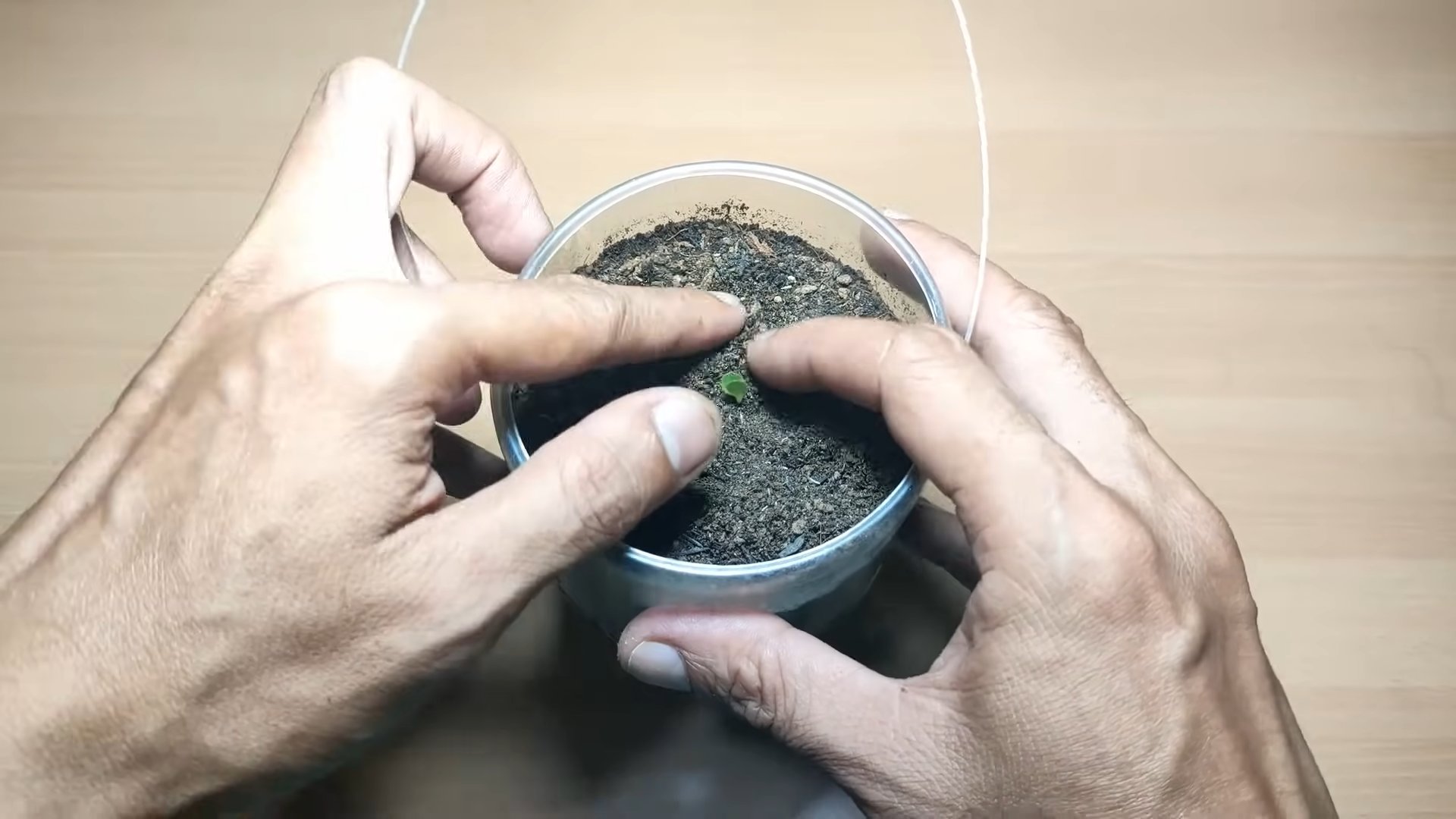
Conclusion
So, there you have it! Growing lettuce at home, even if you’re a complete beginner, is not only achievable but also incredibly rewarding. Forget those limp, pre-packaged greens from the supermarket. Imagine crisp, vibrant lettuce leaves, bursting with flavor, harvested fresh from your own little garden – whether it’s a sprawling backyard plot, a sunny balcony container, or even a repurposed window box.
This DIY trick isn’t just about saving money (although that’s certainly a perk!). It’s about connecting with your food, understanding where it comes from, and enjoying the unparalleled taste of truly fresh produce. It’s about reducing your environmental footprint by cutting down on transportation and packaging waste. And, perhaps most importantly, it’s about experiencing the simple joy of nurturing something from seed to table.
The beauty of growing lettuce at home lies in its adaptability. Feel free to experiment with different varieties. Romaine, butterhead, loose-leaf – the possibilities are endless! Try succession planting, sowing new seeds every few weeks, to ensure a continuous harvest throughout the growing season. Consider companion planting, pairing your lettuce with herbs like mint or chives to deter pests and enhance flavor. If space is limited, vertical gardening techniques can maximize your yield. You can even try growing lettuce indoors under grow lights during the colder months, extending your harvest year-round.
Don’t be intimidated by the thought of gardening. Lettuce is a forgiving plant, and even small successes can be incredibly motivating. Start small, learn as you go, and don’t be afraid to make mistakes. Every gardening experience, whether successful or not, is a learning opportunity.
We wholeheartedly encourage you to give this DIY trick a try. You’ll be amazed at how easy and satisfying it is to grow your own delicious lettuce. And once you’ve tasted the difference between homegrown and store-bought, you’ll never look back.
We’re confident that you’ll find growing lettuce at home to be a truly enriching experience. So, grab some seeds, prepare your soil, and get ready to enjoy the freshest, most flavorful lettuce you’ve ever tasted.
Now, we want to hear from you! Have you tried growing lettuce at home before? What are your favorite varieties? What challenges have you faced, and what tips can you share with other aspiring gardeners? Share your experiences, photos, and questions in the comments below. Let’s build a community of home lettuce growers and inspire each other to cultivate our own little patches of green goodness. Happy gardening!
Frequently Asked Questions (FAQ)
What is the best time of year to plant lettuce?
Lettuce is a cool-season crop, meaning it thrives in temperatures between 60°F and 70°F. The best time to plant lettuce depends on your climate. In cooler regions, you can start planting in early spring, as soon as the soil can be worked. In warmer regions, you can plant in the fall or winter for a winter harvest. Avoid planting during the hottest months of summer, as lettuce tends to bolt (go to seed) in high temperatures, resulting in bitter-tasting leaves. Succession planting, sowing new seeds every few weeks, is a great way to ensure a continuous harvest throughout the growing season.
What kind of soil does lettuce need?
Lettuce prefers well-drained, fertile soil that is rich in organic matter. A slightly acidic to neutral pH (around 6.0 to 7.0) is ideal. Before planting, amend your soil with compost or well-rotted manure to improve its fertility and drainage. If your soil is heavy clay, consider adding sand or perlite to improve drainage. You can also grow lettuce successfully in containers using a good quality potting mix.
How much sunlight does lettuce need?
Lettuce needs at least six hours of sunlight per day to thrive. However, in hotter climates, it can benefit from some afternoon shade to prevent bolting. If you’re growing lettuce indoors, you’ll need to provide supplemental lighting with grow lights.
How often should I water lettuce?
Lettuce needs consistent moisture to grow well. Water deeply and regularly, especially during dry periods. Aim to keep the soil consistently moist but not waterlogged. Overwatering can lead to root rot, while underwatering can cause the leaves to wilt and become bitter. Check the soil moisture regularly and water when the top inch feels dry to the touch.
What are some common pests and diseases that affect lettuce?
Some common pests that affect lettuce include aphids, slugs, snails, and cutworms. You can control aphids with insecticidal soap or by introducing beneficial insects like ladybugs. Slugs and snails can be controlled with beer traps or by handpicking them off the plants. Cutworms can be deterred by using cutworm collars around the seedlings. Common diseases that affect lettuce include downy mildew, powdery mildew, and bottom rot. Prevent these diseases by providing good air circulation, avoiding overhead watering, and using disease-resistant varieties.
How do I harvest lettuce?
You can harvest lettuce leaves as soon as they are large enough to eat. For loose-leaf varieties, you can harvest individual leaves as needed, allowing the plant to continue producing. For head lettuce varieties, wait until the head is firm and well-formed before harvesting. To harvest, simply cut the head at the base with a sharp knife.
How do I prevent lettuce from bolting?
Bolting is when lettuce plants prematurely go to seed, resulting in bitter-tasting leaves. To prevent bolting, choose bolt-resistant varieties, plant lettuce in a location that receives some afternoon shade, and water regularly to keep the soil cool and moist. You can also mulch around the plants to help retain moisture and keep the soil cool.
Can I grow lettuce in containers?
Yes, lettuce grows very well in containers. Choose a container that is at least 6 inches deep and has drainage holes. Use a good quality potting mix and water regularly. Container-grown lettuce may need to be watered more frequently than lettuce grown in the ground, especially during hot weather.
What are some good companion plants for lettuce?
Good companion plants for lettuce include carrots, radishes, onions, garlic, and herbs like mint, chives, and dill. These plants can help deter pests, improve soil health, and enhance the flavor of the lettuce. Avoid planting lettuce near fennel, as it can inhibit its growth.
How do I store harvested lettuce?
To store harvested lettuce, wash and dry the leaves thoroughly. Wrap them in a paper towel and store them in a plastic bag in the refrigerator. Lettuce stored this way can last for up to a week.


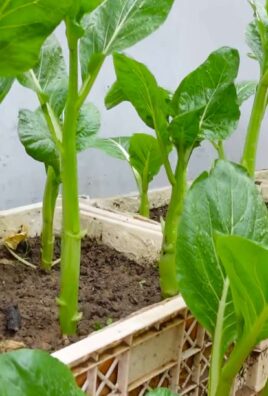
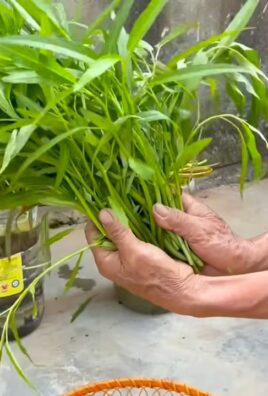
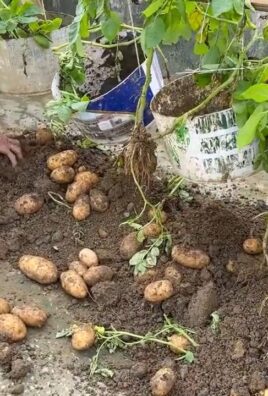
Leave a Comment